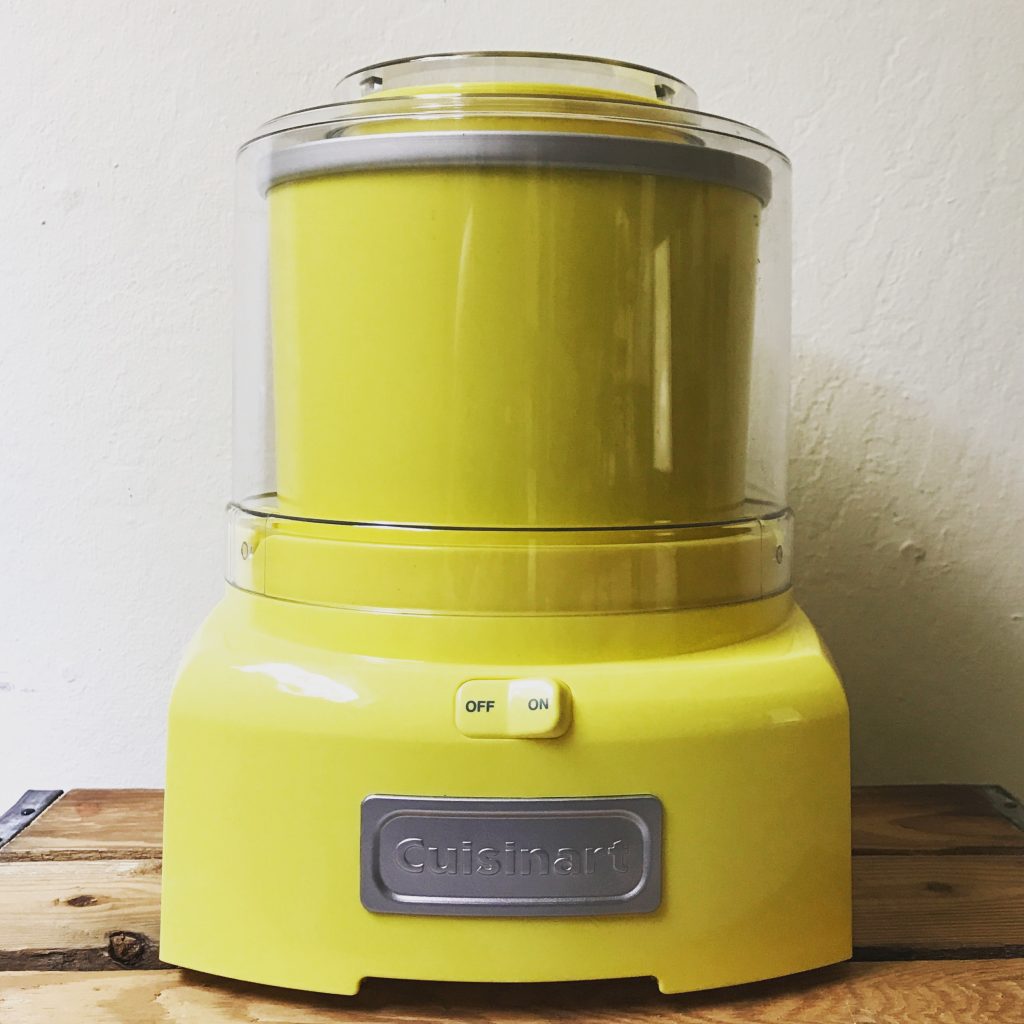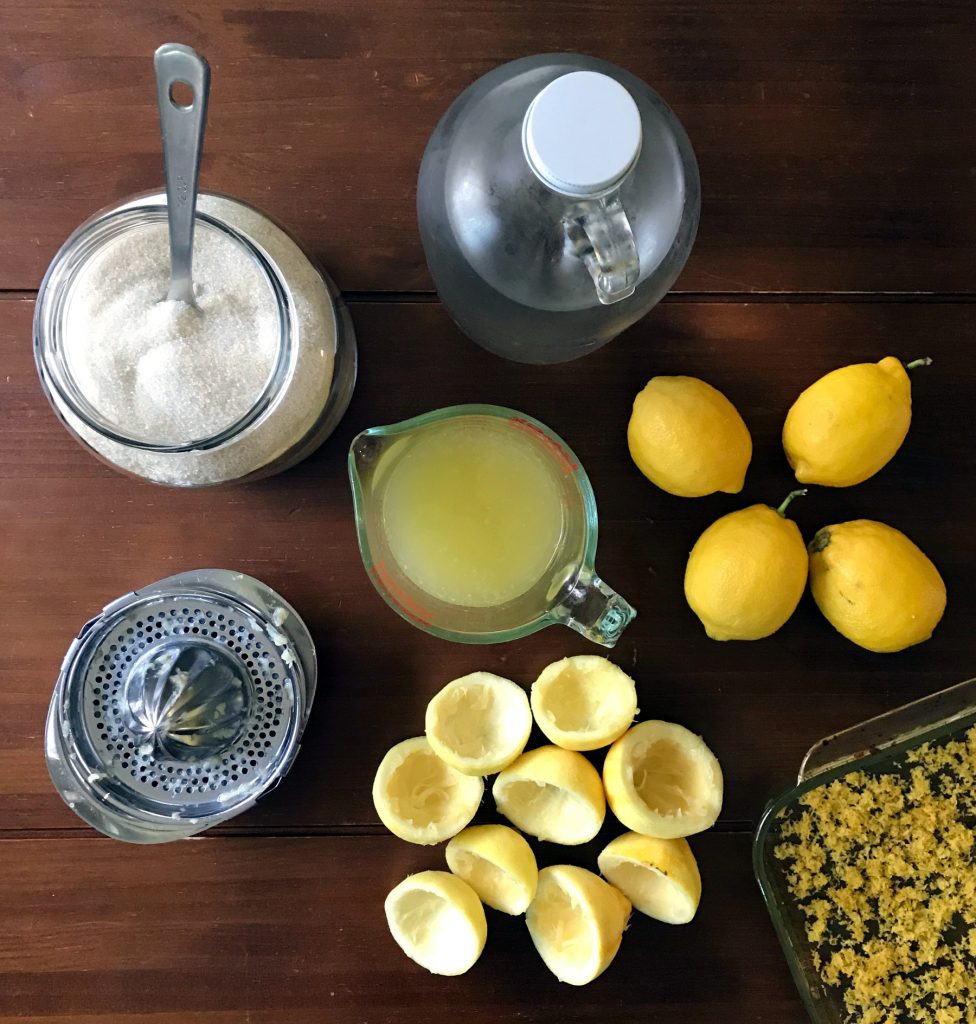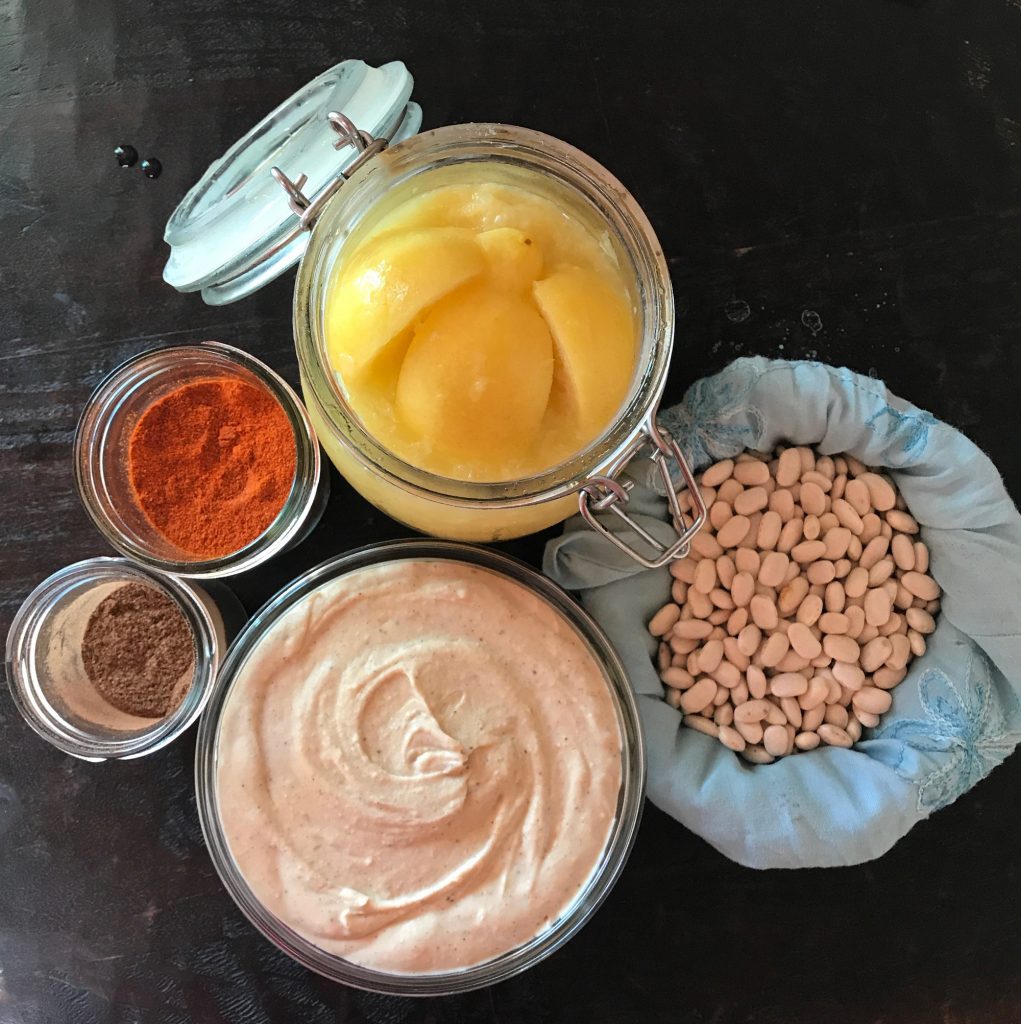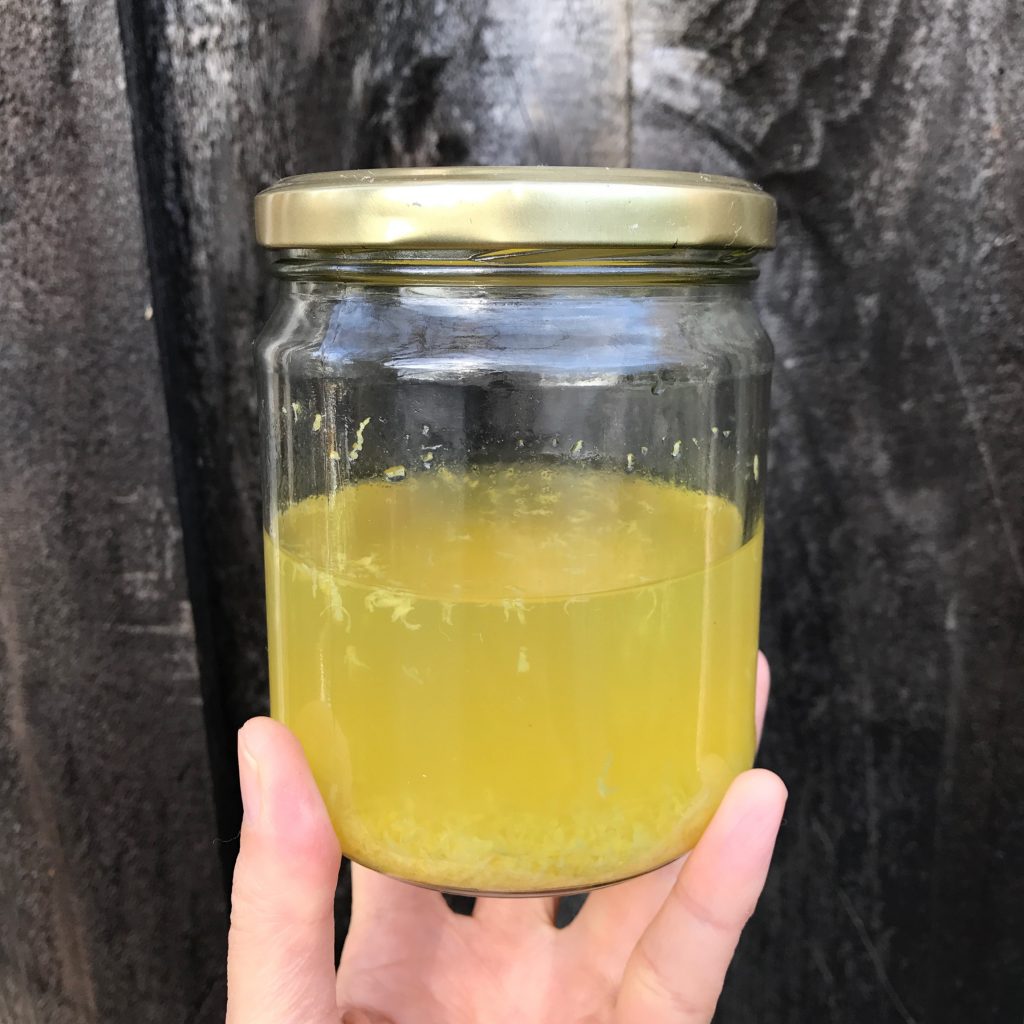The lemons on my lemon tree are almost ready and so am I with these recipes. If you live in a warm climate but don’t have a lemon tree in your yard, someone near you might. Check the website Falling Fruit for urban fruit trees that you can pick for free in your city.
Note bene! Some of these recipes incorporate the peels and you probably don’t want to eat peels covered in pesticide residue. You can find organic lemons at many grocery stores but they may be coated in food-grade wax. If, like me, you would prefer not to eat peels coated in wax, ask your grocer if the lemons have been coated. I have read online that you can pour boiling water over waxed lemons and then scrub off the wax. However, hot water will kill the beneficial microbes that you need to make the preserved lemons below.
1. Preserved Lemons
If you can find preserved lemons in a grocery store, they will cost you a small fortune—around 10 dollars for an 8-ounce jar, more for organic. Although they are worth the price, if you have a jar, some salt, a bunch of lemons and patience—these sit for a month or longer—you can easily make them yourself. I used about 10 lemons for each 1-liter jar pictured below—six to preserve and four for additional juice that goes into the jar.
Go here for the preserved lemons recipe.
Not sure what to do with your lemons once they are ready? See #2 and #3.
2. Hummus with Preserved Lemon
Preserved lemons go really well with beans and legumes, which play a big role in the planetary health diet, “The first science-based diet that tackles both the poor food eaten by billions of people and averts global environmental catastrophe.” Read about the diet here (hint: eat less red meat in Western countries).
When you set out on the plastic-free or zero-waste path, your hummus intake becomes inversely proportionate to the amount of trash you reduce. It’s a well-known phenomenon 😉
Preserved lemons contain a surprising amount of oil so I don’t add olive oil to this hummus recipe. I love conserving my expensive olive oil for other recipes! We go through lots of it.
Go here for the hummus recipe with preserved lemon.
3. Olive and Preserved Lemon Spread
This recipe is something like tapenade but I don’t call it that because I don’t add capers. It would taste good with them though, I just don’t usually have many on hand. Bulk heaven in San Francisco (aka Rainbow Grocery) may sell them. I will have to check the next time I go.
This dip tastes delicious with sourdough bread or sourdough crackers. Here is the recipe.
4. Lemon Extract
Don’t want to see lemon season end? Make this lemon extract to infuse lemony goodness into cakes, muffins, cookies, pancakes and more.
If you do make the preserved lemons, you will have lots of lemon peels left over from squeezing the juice necessary to cover the lemons in your jar. This extract—made like vanilla extract but with lemons—will use up some of those peels. Keep in mind that lemons zest more easily before you juice them.
Go here for the lemon extract recipe.
5. Lemon Sorbet
When I wrote the post for this sorbet last year, I didn’t own an ice cream maker. Since then, I’ve found one—like new—on the side of the road. So I’ll make the sorbet in the ice cream maker this year. Don’t worry if you don’t own one though. To make sorbet without an ice cream maker, pour the liquid into a dish, put that in the freezer and pull it out every half hour or hour or so and whisk it until it freezes.
Go here for the lemon sorbet recipe.

6. Lemon Curd
Lemon curd is a dessert spread you eat in the same way as jam. It tastes sweet, intensely lemony and has a velvety smooth, custard-like texture. It’s dangerously delicious. I could easily eat an entire jar on my own (and likely have).
To make lemon curd, whisk together lemon juice and zest, sugar and eggs in a small pot without heat. Add butter, turn heat on to medium-low, stir constantly until it thickens and then chill.
Go here for the lemon curd recipe.
7. Naturally Carbonated Lemonade
This lemony, slightly spicy and not-too-sweet lemonade gets its natural carbonation from a ginger bug starter. So before you make the lemonade, you first need to make a ginger bug from organic ginger, sugar and water, and nurture it for about five days. At that time, the ginger bug will smell yeasty, you’ll see white yeast on the bottom of the jar and the bug will have transformed from sweet to slightly sour.
To make the lemonade, you make a simple syrup (sugar and water), let it cool, add lemon juice and liquid from the ginger bug, bottle the drink and wait. The bacteria and yeast in the ginger bug consume the sugar in the lemonade and excrete carbon dioxide, making your drink very bubbly.
Go here for the carbonated lemonade recipe.

But wait, there’s more!
If you find yourself with piles of peels from your lemons (or other citrus), you can use them to make:
- Candied citrus peels
- Frozen zest
- Citrus salt
- Citrus household cleaner
- Natural pest repellant
- Essential oil
- Looseleaf tea blend
- Roasted anything
- Marmalade
- And of course, compost.
Go here for more information on making all of the above.
Happy lemon season!








This will definitely be useful…my lemon trees second crop of the season is about to ripen and I need all the help I can get.
Also, once you’ve zested and squeezed all the juice out, put the rinds in tea cups with tannin stains and cover with hot water for a couple hours. Makes it very easy to wipe off and clean your mugs without bleach 🙂
love all of these ideas My lemon tree is about to be ripe for its second harvest of the season and I need all the recipes I can get,
Also, don’t know if you know this already, but putting the skins of lemons into mugs with coffee/tea stains on them, filling the mugs with hot water and letting them sit for a few hours is a really easy way to get all that tannin build up gone. just needs a bit of light scrubbing. better than bleach, which is what my mum used to use. the mugs look brand new.